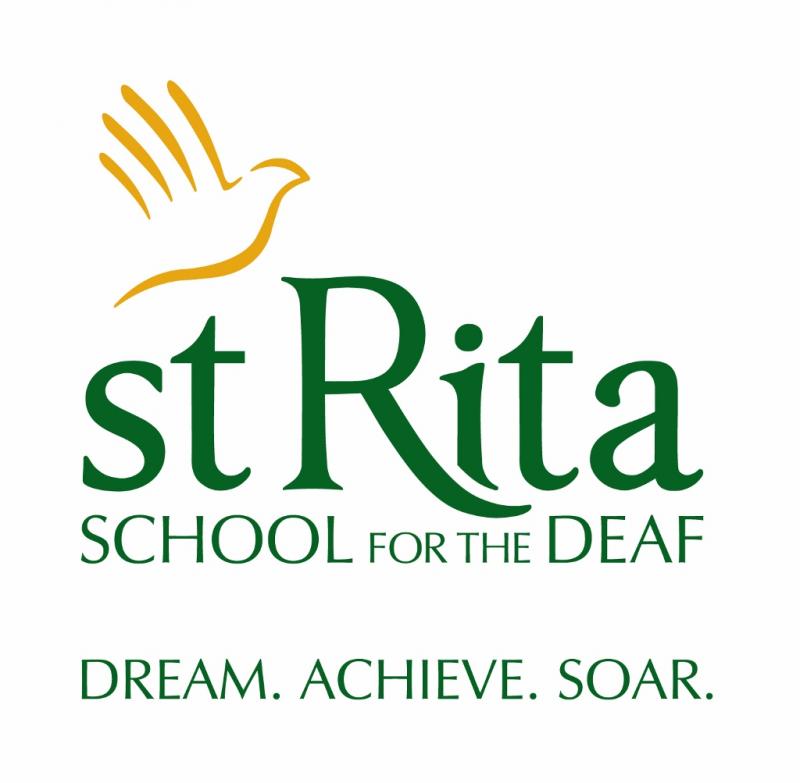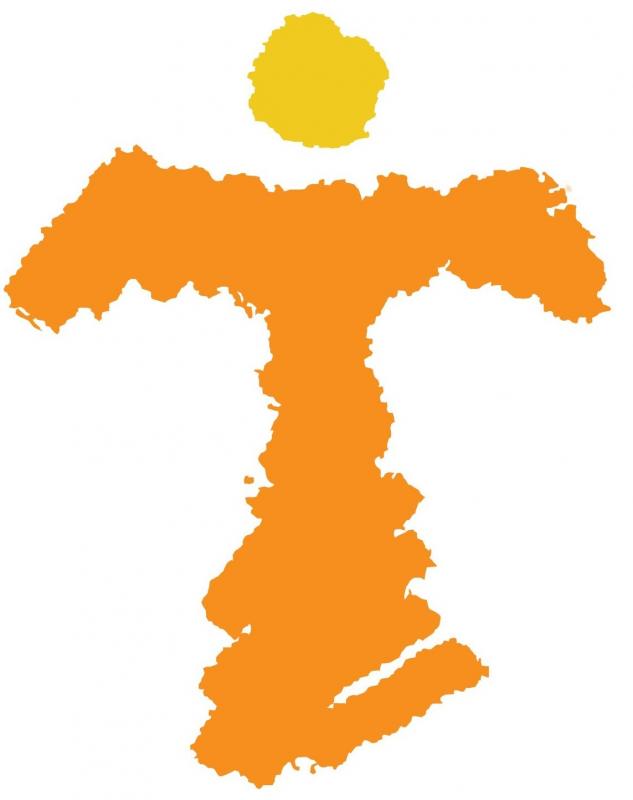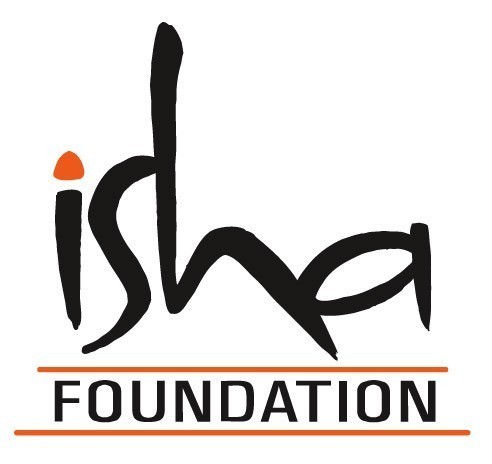Causes: Education, Parent & Teacher Groups, Special Education
Mission: St. Rita School for the Deaf is a Catholic school whose purpose is to educate infants and students who need special methods of communication in a safe, value-oriented environment.
Results: More than 90% of students enrolled into the LOFT program are prepared for Kindergarten.
Target demographics: children 6 weeks to 12th grade who have a hearing loss or are hearing and have communication needs such as apraxia
Direct beneficiaries per year: 182
Geographic areas served: the Greater Cincinnati area
Programs: LOFTLanguage Opportunities for TotsThe LOFT program is designed to meet the developmental needs of young children, hearing and deaf, from birth to 5 years old. It strives to provide experiences that enrich and enhance each child’s language, cognitive, social, emotional, physical, and creative development. Staff provide care that is warm, supportive, nurturing, and responsive to each child’s needs. Within LOFT’s daily schedule, each child will be exposed to opportunities to create, explore, and influence their environment, with an emphasis on developing communication and problem solving skills. A balance of child-centered and adult-modeled activities promote interpersonal interaction and provide opportunities to develop a positive self-concept. LOFT’s preschool program is built upon the Montessori philosophy and led by a Montessori trained and certified teacher. Large open spaces and low teacher-child ratios create an environment that is conducive to every child’s growth and development. Following the Early Learning Content Standards, children leaving preschool and entering Kindergarten will be prepared and ready to learn. Learning GardensSt. Rita School for the Deaf has a unique Learning Gardens program, providing hands-on learning experiences that support state standards for Math, Science, and English. The gardens and greenhouse help nurture the wonderment of nature, create respect for all living things, and inspire students to work cooperatively with one another and their community. Through their work in the gardens, students are reminded that there is a myriad of exciting discoveries to be made in the natural world, and that they don’t have to travel someplace exotic to experience thrill. The Learning Gardens provide the perfect backdrop for students to learn about propagation, landscaping, soil, preparation, composting, and pest control. In a totally organic environment, students of all ages are learning how to grow foods naturally, not only for the health of the earth but for the health of their own bodies. LiteracyWe believe the best way to educate deaf and hard of hearing children and hearing children with language or communication disorders is through Comprehensive Communication. This philosophy offers a child every available stimulus for human interaction, including ASL, PSE, assistive listening devices, visual aids, and technology. All staff and teachers communicate in a way with each child to help him/her develop their language and build reading and writing skills. A full-time Literacy Coordinator works closely with teachers and speech therapists to ensure that each student stays on track with his or her reading and writing goals. St. Rita School for the Deaf is currently using Literacy comprised of a Nine Piece Program which includes: Reading to Students, Language Experience, Independent Reading, Dialogue Journals, Guided Reading and Writing, Shared Reading and Writing, Writing Workshop, and Research Reading and Writing. It also includes Montessori methods as well to help children identify parts of speech and sentence structure. SocializationGrowing and learning socially, outside of the classroom, is an important aspect of education at St. Rita School for the Deaf. With a thriving “After School Activities Program”, St. Rita School students have unique opportunities to communicate with their peers in a more casual setting. There are clubs, classes, and team sports for different age groups, with new activities available each semester. These social programs are not limited to St. Rita School students, but are open to all mainstreamed students as well. These programs serve as a creative outlet for self-expression, teamwork, and building self-esteem. TechnologyTechnology plays a crucial role in developing communication and language with the students at St. Rita School for the Deaf. Children who wear haring aids and cochlear implants can benefit from the Phonak FM System. The FM System amplifies the teacher’s voice to help children recognize speech sounds and focus on what matters most, learning. Classrooms are equipped with technology that includes Interwrite Boards, computers, and video phones, and TVs. Interwrite Boards become an extension of the computer, offering students a chance to stand in front of the class and use digital markers to write, drag, and tap their way through educational lessons that are fun. Using the virtual marker, students can drag words to their corresponding pictures and watch the image come to life through simple animation. These interactive exercises assist St. Rita’s students of all ages form connections between ASL (American Sign Language) and written English. The school continues to see an increase in Reading and Math scores while using the Interwrite Boards. Video phones provide a visual tool for communicating with one another. Students can see the facial expressions of the other person to provide a clear communication of the concepts and ideas being portrayed. WSRS News is broadcasted live from the TV studio to all classrooms everyday to for morning announcements, The Pledge of Allegiance, and a thought for the day. Vocabulary words are introduced as well to help the child continue to develop their language. Sign n’ Say www. apraxiaeducation. orgSt. Rita School for the Deaf’s Sign n’ Say Program uses sign language to give students with childhood apraxia of speech another way to communicate, building a language base to allow children to progress in their academic education while they develop the speech skills needed to communicate verbally. Small class sizes allow each student with apraxia to receive individual attention they need to overcome their motor and sensory challenges associated with Apraxia. These components are combined Sign n’ Say adaptation of curriculum and teaching techniques to create an environment where children can succeed both academically and socially. A support group allows parents of apraxic children to get together once a month and compare notes on how they are dealing with the special needs of their child. The group is open to parents of students not enrolled in the Sign n’ Say program as well. Voc 2A program for high school students who are deaf with other multiple needs and their learning and language level are far below their age. The students are not college bound students but have the potential to be productive members of society after they leave St. Rita School for the Deaf. The Voc 2 program teaches functional academics through the community and life skills. Students participate in an array of programs including the Special Olympics and community work sites. A Work Study Coordinator, works closely with the students teaching them job training skills. She also works closely with community businesses that are willing to help train students in various jobs. Currently, CiCi’s Pizza in Tri-County, LaRosa’s in Tri-County, and Sharon Hill Day Care are embracing our students and teaching them various job training skills to help them become productive members of society. Part of the curriculum for the students is to have “specials” for the kids which include physical education, art, and for some of the students-yoga.
Mission: St. Rita School for the Deaf is a Catholic school whose purpose is to educate infants and students who need special methods of communication in a safe, value-oriented environment.
Results: More than 90% of students enrolled into the LOFT program are prepared for Kindergarten.
Target demographics: children 6 weeks to 12th grade who have a hearing loss or are hearing and have communication needs such as apraxia
Direct beneficiaries per year: 182
Geographic areas served: the Greater Cincinnati area
Programs: LOFTLanguage Opportunities for TotsThe LOFT program is designed to meet the developmental needs of young children, hearing and deaf, from birth to 5 years old. It strives to provide experiences that enrich and enhance each child’s language, cognitive, social, emotional, physical, and creative development. Staff provide care that is warm, supportive, nurturing, and responsive to each child’s needs. Within LOFT’s daily schedule, each child will be exposed to opportunities to create, explore, and influence their environment, with an emphasis on developing communication and problem solving skills. A balance of child-centered and adult-modeled activities promote interpersonal interaction and provide opportunities to develop a positive self-concept. LOFT’s preschool program is built upon the Montessori philosophy and led by a Montessori trained and certified teacher. Large open spaces and low teacher-child ratios create an environment that is conducive to every child’s growth and development. Following the Early Learning Content Standards, children leaving preschool and entering Kindergarten will be prepared and ready to learn. Learning GardensSt. Rita School for the Deaf has a unique Learning Gardens program, providing hands-on learning experiences that support state standards for Math, Science, and English. The gardens and greenhouse help nurture the wonderment of nature, create respect for all living things, and inspire students to work cooperatively with one another and their community. Through their work in the gardens, students are reminded that there is a myriad of exciting discoveries to be made in the natural world, and that they don’t have to travel someplace exotic to experience thrill. The Learning Gardens provide the perfect backdrop for students to learn about propagation, landscaping, soil, preparation, composting, and pest control. In a totally organic environment, students of all ages are learning how to grow foods naturally, not only for the health of the earth but for the health of their own bodies. LiteracyWe believe the best way to educate deaf and hard of hearing children and hearing children with language or communication disorders is through Comprehensive Communication. This philosophy offers a child every available stimulus for human interaction, including ASL, PSE, assistive listening devices, visual aids, and technology. All staff and teachers communicate in a way with each child to help him/her develop their language and build reading and writing skills. A full-time Literacy Coordinator works closely with teachers and speech therapists to ensure that each student stays on track with his or her reading and writing goals. St. Rita School for the Deaf is currently using Literacy comprised of a Nine Piece Program which includes: Reading to Students, Language Experience, Independent Reading, Dialogue Journals, Guided Reading and Writing, Shared Reading and Writing, Writing Workshop, and Research Reading and Writing. It also includes Montessori methods as well to help children identify parts of speech and sentence structure. SocializationGrowing and learning socially, outside of the classroom, is an important aspect of education at St. Rita School for the Deaf. With a thriving “After School Activities Program”, St. Rita School students have unique opportunities to communicate with their peers in a more casual setting. There are clubs, classes, and team sports for different age groups, with new activities available each semester. These social programs are not limited to St. Rita School students, but are open to all mainstreamed students as well. These programs serve as a creative outlet for self-expression, teamwork, and building self-esteem. TechnologyTechnology plays a crucial role in developing communication and language with the students at St. Rita School for the Deaf. Children who wear haring aids and cochlear implants can benefit from the Phonak FM System. The FM System amplifies the teacher’s voice to help children recognize speech sounds and focus on what matters most, learning. Classrooms are equipped with technology that includes Interwrite Boards, computers, and video phones, and TVs. Interwrite Boards become an extension of the computer, offering students a chance to stand in front of the class and use digital markers to write, drag, and tap their way through educational lessons that are fun. Using the virtual marker, students can drag words to their corresponding pictures and watch the image come to life through simple animation. These interactive exercises assist St. Rita’s students of all ages form connections between ASL (American Sign Language) and written English. The school continues to see an increase in Reading and Math scores while using the Interwrite Boards. Video phones provide a visual tool for communicating with one another. Students can see the facial expressions of the other person to provide a clear communication of the concepts and ideas being portrayed. WSRS News is broadcasted live from the TV studio to all classrooms everyday to for morning announcements, The Pledge of Allegiance, and a thought for the day. Vocabulary words are introduced as well to help the child continue to develop their language. Sign n’ Say www. apraxiaeducation. orgSt. Rita School for the Deaf’s Sign n’ Say Program uses sign language to give students with childhood apraxia of speech another way to communicate, building a language base to allow children to progress in their academic education while they develop the speech skills needed to communicate verbally. Small class sizes allow each student with apraxia to receive individual attention they need to overcome their motor and sensory challenges associated with Apraxia. These components are combined Sign n’ Say adaptation of curriculum and teaching techniques to create an environment where children can succeed both academically and socially. A support group allows parents of apraxic children to get together once a month and compare notes on how they are dealing with the special needs of their child. The group is open to parents of students not enrolled in the Sign n’ Say program as well. Voc 2A program for high school students who are deaf with other multiple needs and their learning and language level are far below their age. The students are not college bound students but have the potential to be productive members of society after they leave St. Rita School for the Deaf. The Voc 2 program teaches functional academics through the community and life skills. Students participate in an array of programs including the Special Olympics and community work sites. A Work Study Coordinator, works closely with the students teaching them job training skills. She also works closely with community businesses that are willing to help train students in various jobs. Currently, CiCi’s Pizza in Tri-County, LaRosa’s in Tri-County, and Sharon Hill Day Care are embracing our students and teaching them various job training skills to help them become productive members of society. Part of the curriculum for the students is to have “specials” for the kids which include physical education, art, and for some of the students-yoga.
1720 Glendale Milford Rd, Cincinnati, OH 45215
513-771-7600

Education
Cincinnati
















































